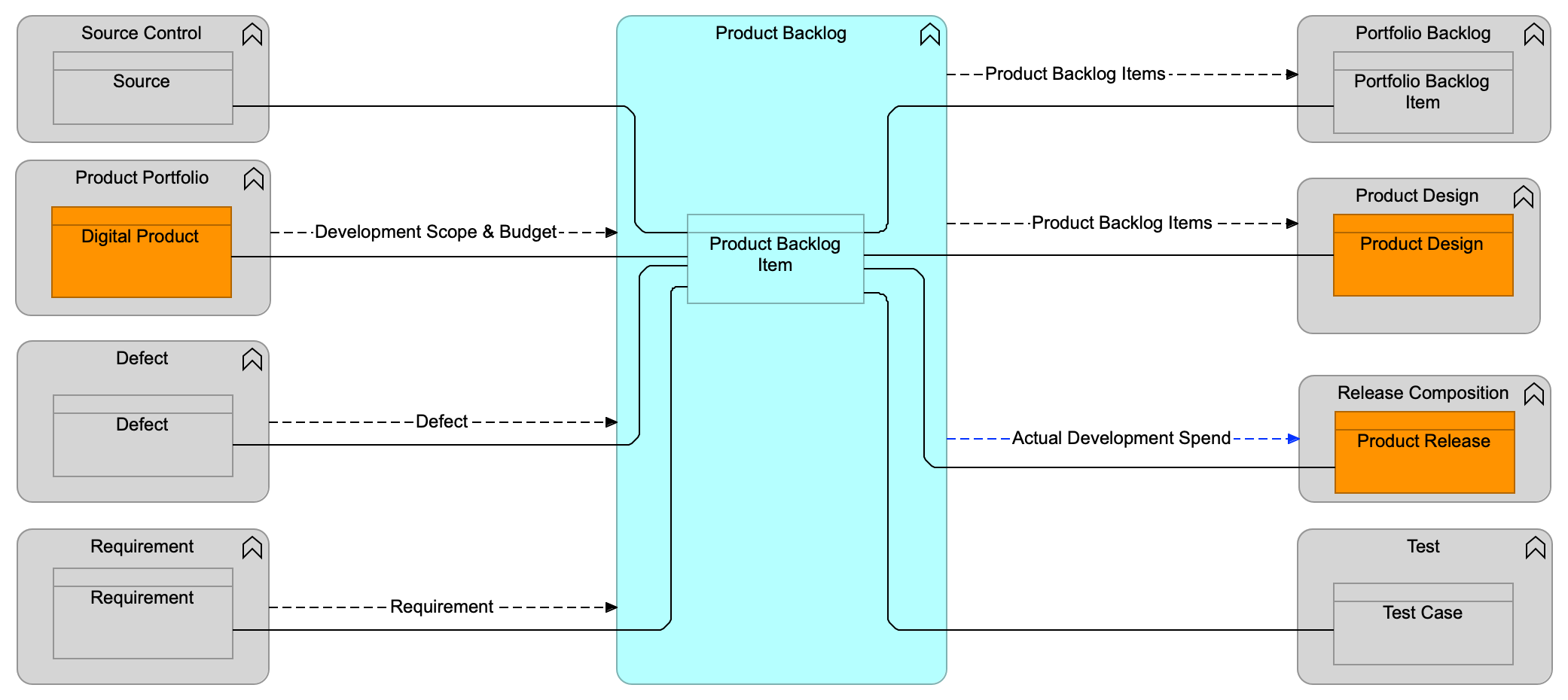Product Backlog Functional Component

Purpose
The Product Backlog functional component manages the creation of, and provides the ongoing execution, oversight, and management of all work items (Product Backlog items) involved in the creation, modification, or improvement of a Digital Product throughout its entire lifecycle, delivered through Product Releases.
Product Backlog functional component manages the lifecycle of Product Backlog Items including organization of Product Backlog Items into prioritized and rationalized team backlogs. It maintains the linkage / traceability from Portfolio Backlog Items to Requirements and Product Releases. It aggregates, tracks, and reports status, resources consumed against the plan (e.g., project, iteration or sprint plan), and communicates these to stakeholders.
The Product Backlog functional component also receives Defects from the Defect functional component to enable the development of fixes and/or temporary workarounds.
The Product Backlog functional component supports the value streams:
Functional Criteria
The Product Backlog functional component:
-
Shall be the system of record (authoritative source) for all Product Backlog Items for a specific Digital Product
-
Shall define standard types of Product Backlog Items such as product epics, product features, and user stories
-
Shall include security, risk, and compliance Product Backlog Items to ensure security and risk management stories are fully embedded into each Product Release
-
Shall have the ability to organize Product Backlog Items into groups associated with a specific Digital Product or implementation team.
-
Shall prioritize each of the Product Backlog Items
-
Shall define the value for the customer of each Product Backlog Item
-
Shall have the ability to capture and maintain the size and effort of each Product Backlog Item
-
Can have associated requirements, including non-functional requirements
-
Shall define acceptance criteria for each Product Backlog Item
-
Shall define the “Definition of Done” for each Product Backlog Item
The Definition of Done is an agreed set of criteria that must be completed before a Product Backlog Item can be considered as “done.” This may include administrative tasks not directly related to acceptance criteria.
-
Shall have the ability to calculate the business impact and cost of delay for each Product Backlog Item
-
Shall have the ability to record risks associated with Product Backlog Items
-
Shall manage the lifecycle and status of the Product Backlog Items
-
Shall coordinate the planning (e.g., sprint plans) of Product Backlog Items and provide ongoing execution oversight of Product Backlog Items
-
Shall aggregate, track, and report status, resources consumed against the plans, or burn down charts, and communicate these to stakeholders such as Financial Management
-
May integrate with the Collaboration & Communication functional component to engage with different stakeholders during design, development, deploy, and test management activities
-
Shall maintain traceability between Product Backlog Items and associated products and service(s) being developed
-
Can relate a Product Backlog Item to a Portfolio Backlog Item
-
Can decompose Product Backlog Items into sub-Product Backlog items (e.g., features with related user stories)
-
Can use different methods or practices to manage and visualize the backlog items such as Scrum, Kanban, or traditional Project Management methodologies
-
Shall maintain the linkage/traceability from Portfolio Backlog Items to actual realization in Product Releases